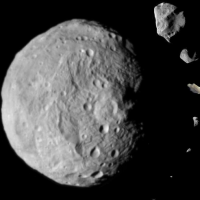NASA Wants You to Join the Asteroid Hunters

What are your odds of being hit by an asteroid? Regardless of Hollywood’s killer-asteroid movies that depict the impending annihilation of civilization as we know it, no human in the past 1000 years is known to have been killed by one. In fact, the odds of us going the way of the dinosaurs is about 1 in 700,000, according to Dr. Phil Plait, aka “The Bad Astronomer.”
But that doesn’t mean NASA doesn’t take asteroid threats seriously. The first step in protecting the Earth from being wiped out from an asteroid is identifying them and knowing where they are. If you’ve ever been interested in joining the ranks of asteroid hunters—and have your own telescope—NASA has an app for you.
NASA announced new desktop software, developed in partnership with Planetary Resources, the asteroid mining company based in Redmond, Washington, that analyzes images taken by telescope for potential asteroids. The app is based on an algorithm derived from the Asteroid Data Hunter challenge that concluded in December 2014, part of NASA's Asteroid Initiative.
Since the 1970s, NASA has been studying asteroids and comets that come within 28 million miles of Earth's path around the sun. To detect asteroids, astronomers take images of the same place in the sky and look for star-like objects that move between frames.
With the new algorithm, amateur astronomers can take images from their telescopes and analyze them, using the application from their desktop computer or laptop. The application will detect if a matching asteroid record already exists. If not, potential asteroid discoveries can be reported to the Minor Planet Center at the Smithsonian Astrophysical Observatory, which then confirms and archives any new asteroid discoveries.
The free app is available for Windows and Mac users, and a Linux version is coming soon.
So what happens if an astronomer or amateur asteroid hunter does detect an object that’s potentially dangerous? It could be a target for NASA’s Asteroid Redirect Mission.

